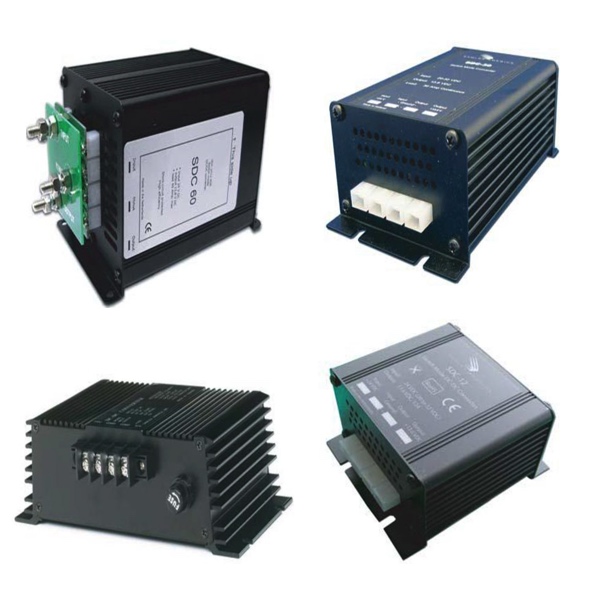Samlex Voltage Converters

DC to DC converters from Samlex have an outstanding reputation for efficiency, reliability, and versatility in many different systems, for tons of applications. These are primarily meant to change one DC voltage level to another, ensuring that whatever next downstream device is going to receive the right amount of voltage for optimal performance. These are seen in various situations when you have a power source producing one voltage and a load that's requiring some other voltage.
DC to DC converters made by Samlex are full of safety features that definitely make them safe and reliable. They have built-in protection against overvoltages, which are dangerous if they last for too long or if they are too high in magnitude. When the voltage that is being supplied by the converter exceeds the safe limits, it trips the converter after a matter of few milliseconds and cuts off the supply to the equipment in a safe manner.
Samlex provides an extensive selection of DC-to-DC converters to serve a wide range of voltage conversion requirements. Is voltage conversion needed to "step up" the voltage (i.e., change it into a higher voltage level) from 12V to 24V in some application? We have that converter. Or is this type of application in need of a voltage converter to "step down" the voltage (i.e., reduce it to a lower voltage level) from 24V to 12V? We have that converter too! Whatever the requirement—in a vehicle, boat, off-grid power system—Samlex has a solution that will work.
Signal Conditioning: Isolators, Converters, Amplifiers & Splitters
Signal isolators are used to protect sensitive equipment, such as PLCs, from potential hazards that may originate from devices they are connected to, such as sensors or transmitters. Isolators can also be used to filter any noise that might arise from disturbances along the signal path back to the PLC.
Signal converters take one type of signal and change it to something else. For example, a signal converter can interpret an RTD signal and convert it into something that a PLC can understand.
Signal amplifiers increase the resolution of an input signal, allowing for more accurate and detailed data to be sent to the controller, enabling better monitoring and control of devices. Another important function that amplifiers perform is increasing the signal-to-noise ratio.
Signal splitters do not change the signal, but allow the signal to be sent to more than one location. For example, a signal splitter can be used to send data to two different PLC’s without any signal degradation.

